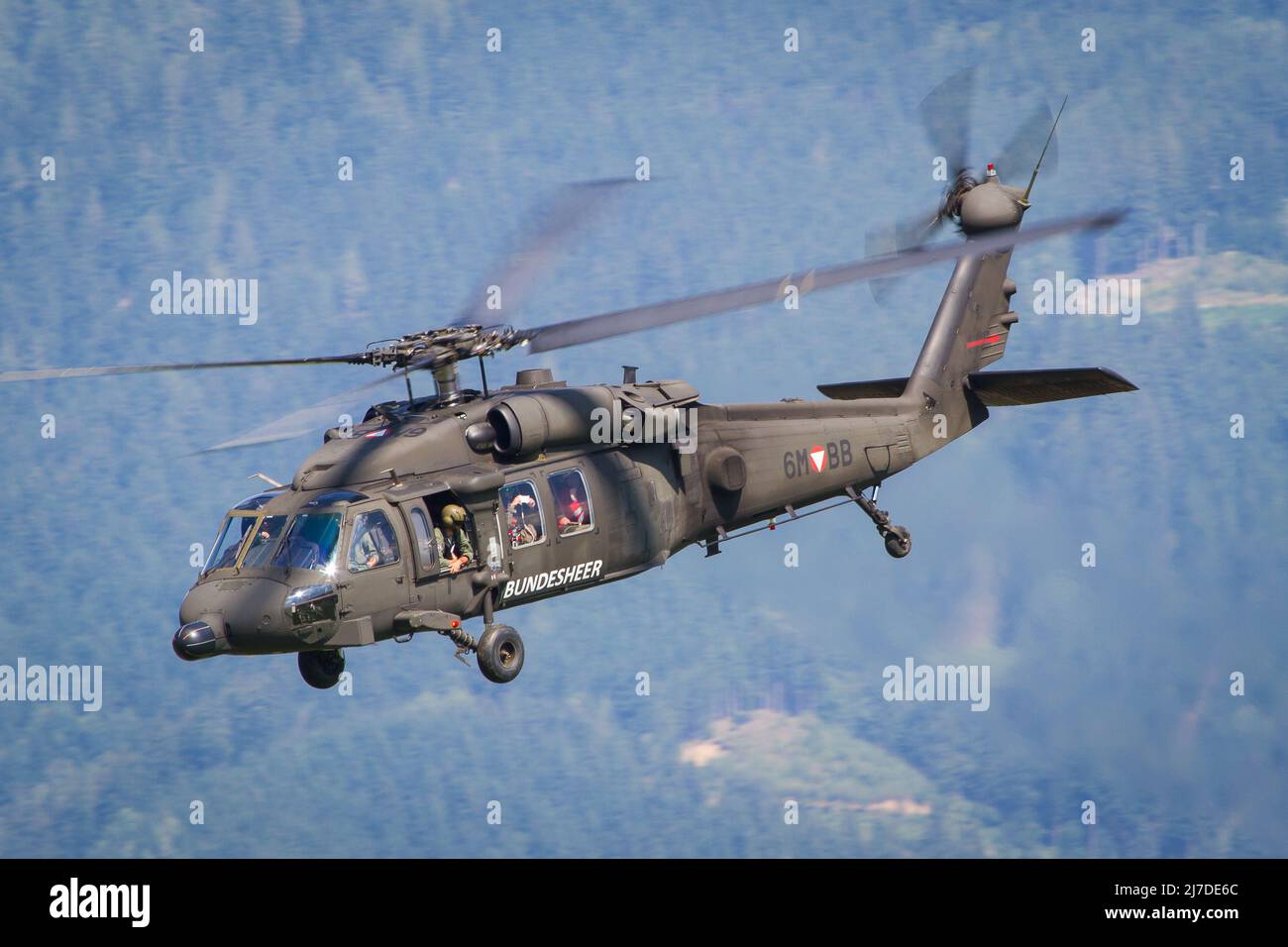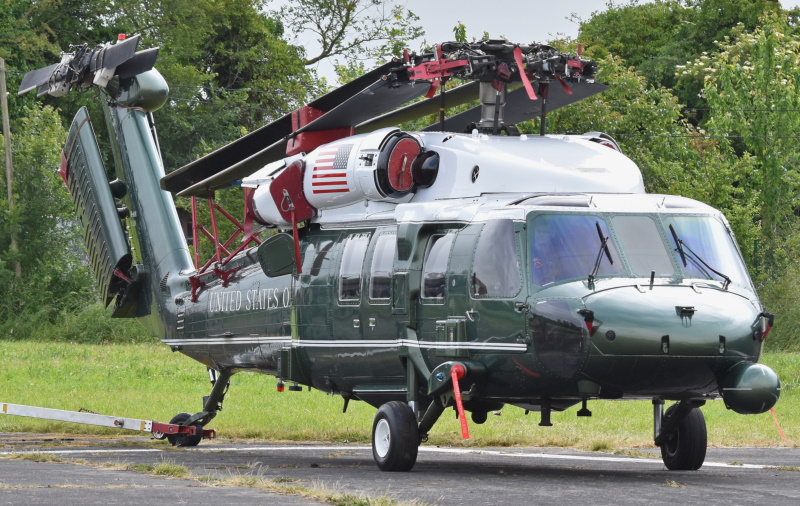Sikorsky S 70: Enhancing Helicopter Performance and Adaptability
Sikorsky S 70: Enhancing Helicopter Performance and Adaptability
Blog Article
High-Performance Multi-Role Rotorcraft Featuring Advanced Cabin Technologies and Integrated Sensor Equipments
The realm of rotorcraft technology has seen remarkable improvements in recent times, especially in the realm of high-performance multi-role rotorcraft equipped with cutting-edge cockpit modern technologies and effortlessly incorporated sensing unit systems. These technologies have not only augmented the operational abilities of rotorcraft but have actually additionally dramatically affected modern-day air travel operations on various fronts. From improved goal versatility to boosted operational performance, the merging of innovative cabin modern technologies and integrated sensing unit systems has introduced a new period of possibilities for rotorcraft applications. In the following conversation, we will check out the evolution of rotorcraft innovation, look into the realm of sophisticated cockpit innovations, and check out the effects of incorporated sensor systems on the functional versatility and efficiency of modern-day rotorcraft.
Development of Rotorcraft Technology
The evolution of rotorcraft innovation has been marked by considerable developments in aerodynamics, products, and propulsion systems, shaping the capabilities and efficiency of contemporary rotorcraft. In addition, improvements in propulsion systems, including a lot more effective engines and ingenious propulsion innovations, have actually made it possible for rotorcraft to achieve higher altitudes, faster speeds, and higher payloads.
These advancements have not only changed the abilities of rotorcraft however have actually also broadened their applications across various industries, including army, commercial, and emergency situation services. The continual advancement of rotorcraft technology remains to drive advancement in the field, pressing the boundaries of what is possible and forming the future of vertical flight.
Advanced Cabin Innovations
Structure upon the fundamental improvements in the rules of aerodynamics, materials, and propulsion systems, the world of rotorcraft innovation currently moves focus in the direction of pioneering Advanced Cabin Innovations. The combination of innovative technologies within the cabin atmosphere plays a vital duty in boosting the operational capabilities, safety, and efficiency of contemporary rotorcraft. sikorsky s 70. Advanced Cabin Innovations incorporate a broad selection of attributes created to offer pilots with boosted situational understanding, structured information management, and instinctive control user interfaces
One of the essential developments in cockpit layout is the execution of glass cabins, which change conventional analog assesses with high-resolution screens. These electronic systems use adjustable formats, real-time information assimilation, and boosted readability, enabling pilots to access important information at a glimpse. Furthermore, advanced avionics systems, such as fly-by-wire controls and enhanced reality display screens, are reinventing how pilots interact with the aircraft, enabling precise control and boosted decision-making abilities.


Including innovative cockpit technologies not just improves pilot efficiency yet additionally adds to general goal effectiveness and security in complicated functional atmospheres. By leveraging state-of-the-art innovations within the cockpit, rotorcraft producers are establishing brand-new standards for functional excellence and goal success.
Integrated Sensing Unit Systems
With the development of rotorcraft innovation, the combination of advanced Integrated Sensor Equipment has come to be critical in boosting functional performance and safety and security. These Integrated Sensing unit Solutions include a vast variety of technologies that offer critical data for different features such as navigation, surveillance, targeting, and environmental tracking. By perfectly integrating sensing units like radars, cams, lidar, and infrared systems right into rotorcraft, drivers can gain from improved situational recognition, boosted mission abilities, and lowered pilot work.
One trick advantage of Integrated Sensing unit Solutions is their capability to gather real-time information and supply workable insights to go now pilots and goal operators. For instance, progressed radar systems can spot and track targets over cross countries, permitting early risk discovery and efficient reaction planning. Additionally, incorporating electro-optical and infrared electronic cameras makes it possible for rotorcraft to carry out reconnaissance and surveillance objectives with precision and precision.
Basically, the integration of cutting-edge sensor technologies into rotorcraft not only improves operational efficiency however likewise adds significantly to overall mission success and staff safety and security. As rotorcraft continue to develop, the function of Integrated Sensor Systems will certainly remain at the center of advancement article in the aerospace industry.
Functional Adaptability and Efficiency
Enhancing operational versatility and efficiency in rotorcraft is an all-natural progression from the integration of advanced Integrated Sensing unit Solutions. By leveraging the insights and data offered by these cutting-edge sensing unit systems, rotorcraft can enhance their efficiency across different objectives and atmospheres.
Functional versatility encompasses the ability of rotorcraft to adapt to different duties and scenarios efficiently. With advanced cockpit technologies and incorporated sensing unit systems, rotorcraft can seamlessly change in between tasks such as search and rescue, clinical emptying, surveillance, and more. This convenience boosts the rotorcraft's capacity to fulfill varied operational needs without requiring substantial reconfiguration.
Effectiveness in rotorcraft operations is essential for maximizing goal efficiency and source application. Integrated sensing unit systems play an essential role in enhancing operational performance by supplying real-time data on climate condition, terrain mapping, target monitoring, and more. This information enables pilots to make informed decisions promptly, optimize trip courses, preserve gas, and improve general mission efficiency.
Effect On Modern Air Travel Workflow

Additionally, the integration of sophisticated sensors promotes enhanced objective planning and execution, enabling rotorcraft to do a large range of jobs with enhanced accuracy. From search and rescue procedures to aerial firefighting and law enforcement objectives, the abilities of modern rotorcraft outfitted with innovative cabin innovations and incorporated sensor systems are unequaled.
Furthermore, the impact of best site these innovations extends past operational effectiveness to cost-effectiveness and sustainability. By optimizing trip paths, gas usage, and maintenance schedules, high-performance rotorcraft outfitted with advanced cockpit innovations and sensors add to reducing functional prices and ecological effect, making them vital properties in modern-day aeronautics operations.
Verdict
To conclude, the high-performance multi-role rotorcraft with sophisticated cabin modern technologies and integrated sensor systems represents a substantial advancement in aeronautics modern technology. These technologies improve operational adaptability and performance, ultimately influencing modern-day air travel operations in a positive way. The combination of these advanced modern technologies permits improved capacities and efficiency in numerous objective situations, showcasing the continued development of rotorcraft technology in the air travel sector.
The realm of rotorcraft innovation has actually seen noteworthy developments in recent times, especially in the realm of high-performance multi-role rotorcraft outfitted with advanced cabin innovations and flawlessly incorporated sensor systems. From improved mission adaptability to improved operational efficiency, the convergence of innovative cockpit modern technologies and integrated sensing unit systems has actually ushered in a new age of opportunities for rotorcraft applications. In the following conversation, we will certainly discover the advancement of rotorcraft innovation, dive into the realm of advanced cabin developments, and examine the effects of integrated sensing unit systems on the operational versatility and performance of modern rotorcraft.

Report this page